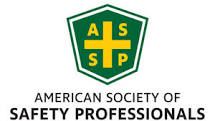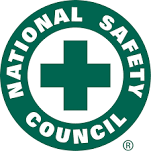OSHA Updates Non-Healthcare Employer Guidance on COVID-19 | FIRST, VERIFY
The Occupational Safety and Health Administration (OSHA) updated its COVID-19 guidance for non-healthcare employers, Protecting Workers: Guidance on Mitigating and Preventing the Spread of COVID-19 in the Workplace, on August 13, 2021.
While embracing the Centers for Disease Control and Prevention’s (CDC) updated recommendations for fully vaccinated people in areas of substantial or high transmission of COVID-19, OSHA also echoes the protocol President Joe Biden adopted for many federal employees and on-site employees of federal contractors and suggests that employers may want to “consider” adopting a policy requiring employees to receive the COVID-19 vaccination or submit to regular COVID-19 testing.
In July 2021, the CDC issued new recommendations that everyone, including fully vaccinated individuals, wear masks in indoor public settings in all areas experiencing substantial or high transmission of COVID-19. That CDC guidance also recommended that fully vaccinated individuals test for COVID-19 and mask after having close contact with an individual suspected or confirmed to have COVID-19. With respect to schools, the CDC recommended universal indoor masking for all teachers, staff, students and visitors to K-12 schools.
The CDC recommendations were precipitated by new evidence regarding the more transmissible Delta variant of the SARS-CoV-2 virus, which causes COVID-19. As explained by OSHA, “preliminary evidence suggests that fully vaccinated people who do become infected with the Delta variant can be infectious and can spread the virus to others.”
OSHA’s guidance now includes the following recommendations:
All workers, including fully vaccinated people, wear a face covering, as appropriate, in public indoor settings in areas of substantial or high transmission (unless their work requires a respirator or other personal protective equipment [PPE]);
Employers suggest or require all customers, visitors, or guests wear face coverings in public, indoor settings in areas of substantial or high transmission of COVID-19;
Employers consider adopting policies that require workers to get vaccinated or undergo regular COVID-19 testing — in addition to masking wearing and physical distancing — if they remain unvaccinated; and
Fully vaccinated workers who have a known exposure to someone with suspected or confirmed COVID-19 be tested three days to five days after exposure and wear a mask in public indoor settings for 14 days or until they receive a negative test result.
What This Means for Employers
The latest guidance expressly states that it is not a standard or regulation, and that it creates no new legal obligations. The recommendations are advisory in nature and intended to help employers recognize and eliminate hazards likely to cause death or serious physical harm as part of their obligation to provide a safe and healthful workplace. The guidance makes clear that many healthcare settings are still covered by OSHA’s COVID-19 Emergency Temporary Standard. Employers should also remain cognizant of different requirements under state OSHA plans.
However, as employers reassess their COVID-19 workplace practices, they should keep in mind that during the Biden Administration, OSHA has more than tripled its use of the General Duty Clause of the Occupational Safety and Health Act to cite employers for COVID-19 hazards not covered by an existing standard. Under the General Duty Clause, OSHA can cite an employer in the absence of a specific OSHA standard, such as those that govern respiratory protection, PPE, and sanitation. It will become even more important to keep abreast of industry best practices, especially related to industries at higher risk of spreading COVID-19, such as construction, manufacturing, agriculture, and meat and poultry processing. Considering OSHA’s new guidance, employers may need to review policies and procedures regarding any potential COVID-19 exposure to employees and consider developing an infectious disease plan.
OSHA continues to recommend that employers adopt a layered approach to minimizing the spread of COVID-19 in the workplace and summarizes the many protective measures employers may choose to use. Regardless of the measures employers choose to implement, their obligation to provide reasonable accommodations for religious, pregnancy-related, and medical reasons, absent undue hardship, continues. OSHA’s guidance notes that accommodation issues may arise with respect to face coverings (including respirators or other PPE) or vaccination requirements. Further, it states that certain medical conditions may put employees at higher risk of contracting COVID-19, by virtue of the condition itself or the inability to use face coverings or be vaccinated due to the condition. Such individuals may be entitled to other reasonable accommodations to protect them from contracting COVID-19.
Source: https://www.natlawreview.com/article/osha-updates-non-healthcare-employer-guidance-covid-19
You might also like






